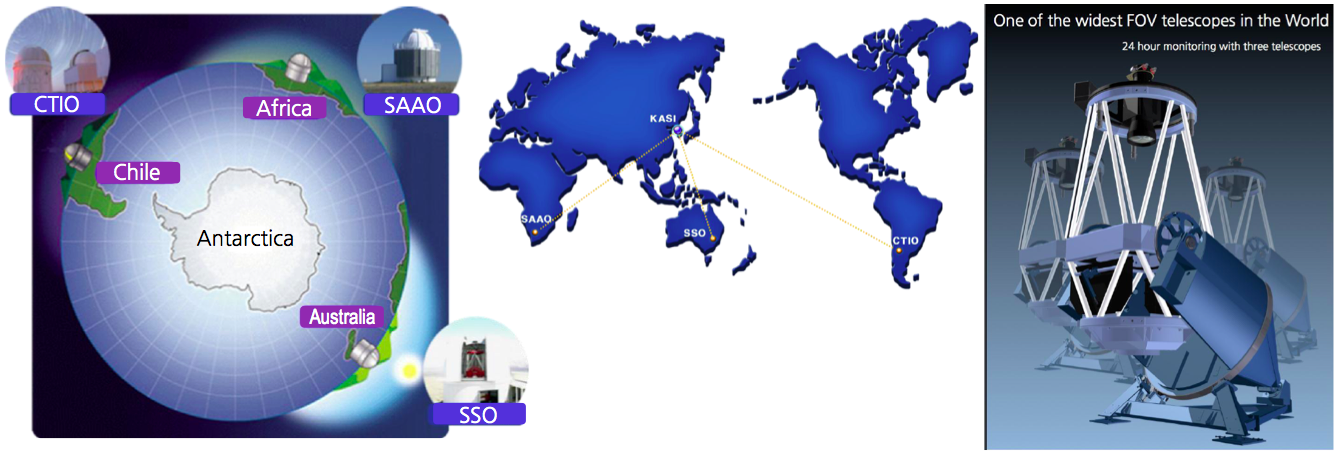|

KMTNet Supernova Project (KSP) is an international astronomical research project. KSP mainly searches for supernova (SN) and does follow-up photometry from early of 2015 till 2018. KSP uses three identical 1.6-m optical telescopes (Korea Microlensing Telescope Network : KMTNet) installed in three continents of the southern hemisphere (Chile, South Africa, and Australia) at similar latitude of about -30 degrees, to secure 24-hour coverage of a celestial target. The three telescopes are installed and operated by the Korea Astronomy and Space Science Institute (KASI) and each telescope provides 2 degree by 2 degree field-of-view (FOV) with a mosaic CCD camera of 18K by 18K pixels (0.40 arcsec per pixel). For half of the year including July and August, KMTNet will dominantly observe the Galactic bulge fields to find extra-solar planets using the gravitational microlensing technique. For the other half of the year including December and January, other sciences are planned such as KSP, asteroids, external galaxies, among which the KSP secured the most time. From routine repeated imaging observations of selected target fields, many numbers of new SNe will be discovered by the KMTNet and the follow-up photometric observations will be made to do continuous monitoring for interesting targets. Taking advantage of the 24-hour coverage of the KMTNet system, the following sciences are going to be done : early and young(less than a few hours) SNe, rare and peculiar SNe (e.g. fast decay, subluminous), progenitors, explosion mechanisms, etc.
|